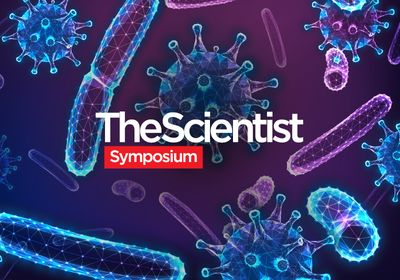When researchers first discovered a louse egg on an ancient human hair, they realized that head lice have itched human scalps for more than 10,000 years.1 Alejandra Perotti, senior lecturer in the biological sciences department at the University of Reading, recently discovered an unexpected benefit of these pesky insects. In a study published in Molecular Biology and Evolution, Perotti showed that the glue that attaches louse eggs, or nits, to hair preserved human DNA for more than 2,000 years, enabling her team to analyze mummies’ genetics without disturbing their remains.2 She used this nondestructive technique to track the migratory paths of ancient humans through South America.

Perotti, an invertebrate biologist who started collecting bugs at the age of two, visits archaeological sites across South America to study louse evolution. She recently collected nits from 2,000-year-old Argentinian mummies. Nits are incredibly difficult to remove because lice encase them in cement-like cylinders around hair. Because these casings contain crosslinked proteins and lipids that form strong, waterproof tubes, they protect louse eggs until they hatch.3,4 “The cement is harder than the industrial gorilla glue. The lipids will protect anything inside; it will not get dry or humid,” Perotti said. For archaeologists, louse glue has an added preservative perk that freezes nits in time. “You find remains of lice in 95 percent of archaeological sites because we were very lousy in the past. It is very rare to find the insect; you [typically] find the nits,” she added.
When Perotti examined the ancient Argentinian hairs, she couldn’t believe her eyes. “We had collected them (nit casings) to study the evolution of the lice,” recounts Perotti. “I checked them with these [fluorescent microscopy] techniques that we developed and started seeing that there was [human] DNA trapped in the glue!”
The history of the parasite is a mirror of the history of the host
- Alejandra Perotti, University of Reading
Not only could Perotti’s team see human nuclei, but they also managed to extract high-quality DNA from them.2 The scientists collected as much DNA from the nuclei trapped in six nit casings as they could from the same individual’s entire tooth.3 “It is a promising tool because it [identifies] a new source of well-conserved DNA when there is no other source,” said Oleg Mediannikov, an evolutionary biologist at the Aix-Marseille University in France, who was not involved in the study. “If well-conserved, even very old specimens may be studied using these techniques because this paper [shows that] louse cement may preserve DNA better than bones or teeth.” However, Mediannikov cautioned that scientists should take every possible measure to prevent contamination when collecting and processing ancient samples due to modern sequencing methods’ sensitivity.

When analyzing the ancient Argentinian mummies’ DNA extracted from the nit cement, Perotti’s team gleaned some important insights into how ancient humans migrated and settled in South America. Scientists previously thought that ancient humans migrated from North America’s Pacific Coast and spread west- and eastward as they traveled into South America. According to this logic, central-west Argentinians would be related to the ancestors of the Incas. “[Our results showed] that they traveled a completely different road about 2,000 years ago. They came from the northeast of the Amazon and walked south to cross into what is now Argentina,” Perotti added. “An unexpected migratory path.”
Perotti next analyzed louse DNA from the eggs to test whether they told the same migratory story as that of the humans whose DNA they helped preserve. When she compared the ancient Argentinian louse DNA to their database, she found that they most closely matched lice from the north of the Amazon. “So, they tell the same story; the history of the parasite is a mirror of the history of the host,” Perotti said. “It's really interesting, because this technique will allow us to study a lot of ancient remains without destroying them. You just need a few hairs.”
References
- A. Araújo et al., “Ten thousand years of head lice infestation,” Parasitol Today, 16(7):269, 2000.
- M.W. Pedersen et al., “Ancient human genomes and environmental DNA from the cement attaching 2,000 year-old head lice nits,” Mol Biol Evol, msab351, 2021.
- C.N. Burkhart et al., "Molecular composition of the louse sheath,” J Parasitol, 85(3):559-61, 1999.
- J.K. Park et al., "Characterization of the human head louse nit sheath reveals proteins with adhesive property that show no resemblance to known proteins,” Sci Rep, 9(1):48, 2019.






